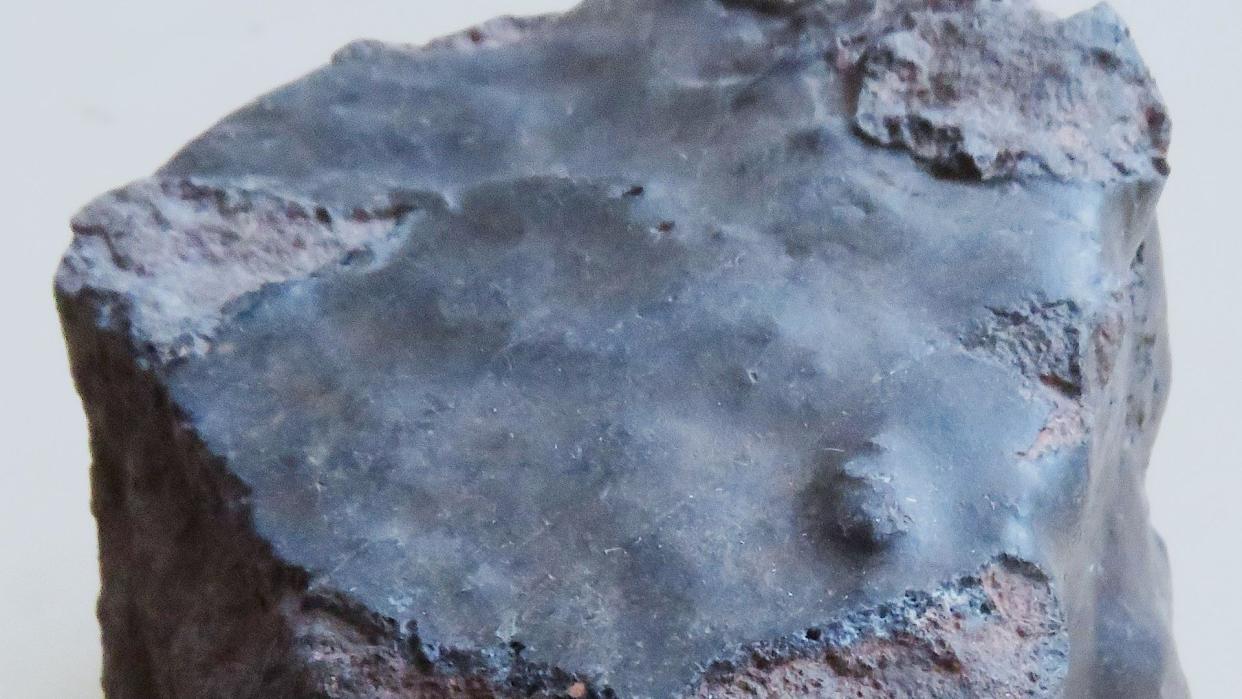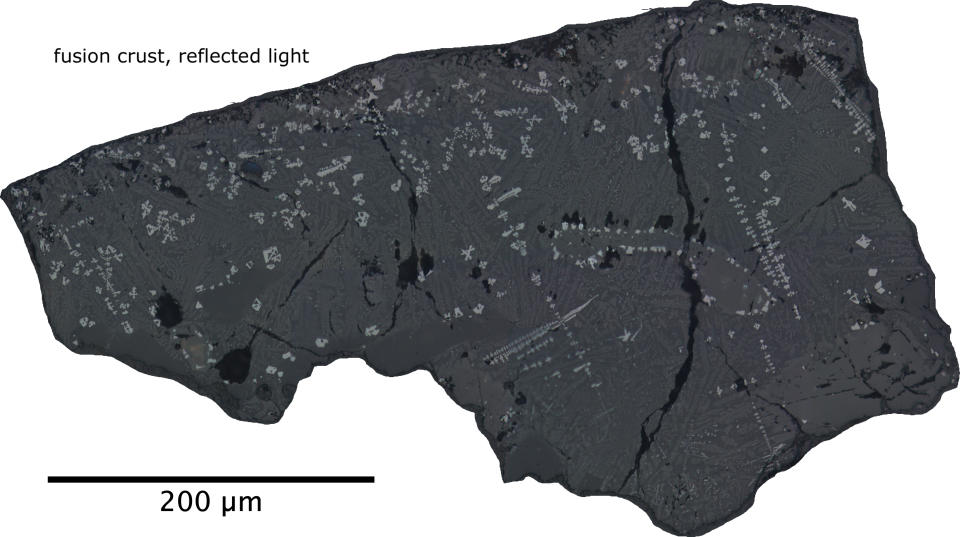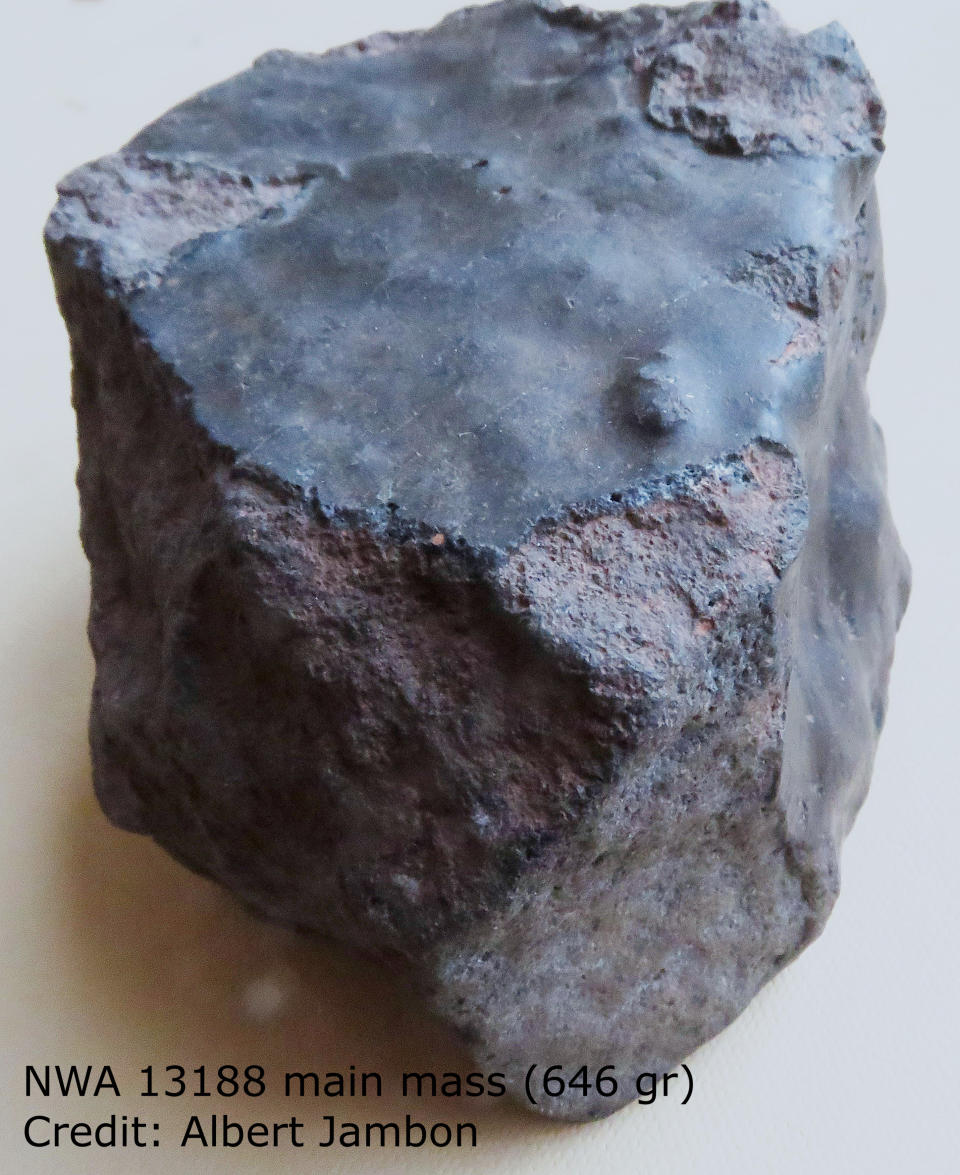Boomerang meteorite may be the 1st space rock to leave Earth and return

A dark reddish-brown stone, picked up from the Sahara desert in Morocco a few years ago, appears to be an Earth rock that was flung into space where it stayed for thousands of years before returning home – surprisingly intact.
If scientists are right about this, the rock will officially be named the first meteorite to boomerang from Earth.
The discovery team's work was presented last week at an international geochemistry conference and has not yet been published in a peer-reviewed journal.
"I think there is no doubt that this is a meteorite," said Frank Brenker, a geologist at the Goethe University Frankfurt in Germany, who was not involved with the new study. "It is just a matter of debate if it is really from Earth."
Related: Over 100 space rocks collected by meteorite hunter Geoffrey Notkin are up for action today
Early diagnostic tests show the unusual stone features the same chemical composition as volcanic rocks on Earth. Interestingly, however, a few of its elements seem to have been altered into lighter forms of themselves. These lighter versions are known to occur only upon interacting with energetic cosmic rays in space, which provided one of two key pieces of evidence declaring the rock's trip beyond Earth, geologists say.
The measured concentrations of these lighter elements, called isotopes, "are too high to be explained by processes taking place on Earth," said Jérôme Gattacceca, a geophysicist at the French National Centre for Scientific Research who is leading the investigation of the unusual meteorite, which was officially named Northwest Africa 13188 (NWA 13188).
Gattacceca and his colleagues strongly suspect the rock was first hurled into space after an asteroid pummeled into Earth roughly 10,000 years ago. The only other natural event capable of catapulting rocks to high altitudes is a volcanic eruption, but geologists say that possibility is highly unlikely to explain the latest findings. Rocks blasting from even the record-breaking Hunga Tonga-Hunga Ha'apai submarine volcano last year peaked at 36 miles (58 kilometers) — well before the edge of Earth's atmosphere, a threshold the meteorite seems to have flown far beyond.
Once hurled into space past Earth's protective blanket, NWA 13188 would've been susceptible to galactic cosmic rays, made of high energy particles that arise from distant exploding stars and penetrate our solar system at light-like speeds. Such abundant beams are known to bombard meteorites and leave behind distinct, detectable isotopic imprints like beryllium-3, helium-10 and neon-21. In NWA 13188, levels of these elements are higher than those found in any rock on Earth, but lower than in other meteorites. This shows the intriguing rock might've spent some 2,000 to a few tens of thousands of years in orbit around Earth before re-entering its atmosphere, scientists say.
The second crucial clue divulging the rock's trip to space is its glossy coat of melted surface called a fusion crust, which forms when space rocks race through Earth's atmosphere during their journey to the ground.

The 1.4-pound NWA 13188 was purchased in 2018 at one of Europe's largest annual mineral and gem shows in Sainte Marie aux Mines, France, by Albert Jambon, a retired French professor from the Sorbonne University of Paris. He said he stays in touch with meteorite hunters and dealers and has bought nearly 300 meteorites for his university in the past two decades.
"I purchased this one just because it was odd," said Jambon. "Nobody knows what this stone is really worth."
The Moroccan dealer who sold the meteorite to Jambon very likely bought it from nomadic Bedouin tribes collecting peculiar stones in the Sahara, so it remains a mystery exactly where NWA 13188 landed after it re-entered Earth. Two years ago, Jambon teamed up with Gattacceca, a long-time collaborator who classifies meteorites for private collectors.
The team's preliminary analysis on the boomerang meteorite hasn't yet convinced other geologists, because the conclusions drawn so far are not indisputable that the rock is, in fact, from Earth.
"It is an interesting rock that would deserve more investigations to be conducted before making extraordinary claims," said Ludovic Ferrière, a curator of the rock collection at the Natural History Museum Vienna in Austria, who was not involved with the new study.
Gattacceca's team also hasn't yet determined the age of the meteorite, a necessary indicator of its origin. The rock was classified as an ungrouped achondrite, and meteorite members of this class are tagged at 4.5 billion years old — the same as the solar system. If NWA 13188 is an Earth rock, however, it must be a lot younger.
Another critical concern is the lack of a large impact crater on Earth young enough to fit the proposed timeline. Gattacceca and his colleagues estimate a crater about 12.4 miles (20 km) wide would have had to form if a 0.6-mile (1 km) wide asteroid crashed into Earth just 10,000 years ago. Among the 50 of the 200 known impact craters on Earth that are the required size, none of them are younger than millions of years.
The Sahara, where NWA 13188 was found, is home to 12 craters, only one of which is 11.1 miles (18 km) wide and at least 120 million years old, according to the Earth Impact Database, a repository of confirmed impact craters on Earth. Although there are dozens of possible impact craters in the African continent pending verification, critics say a 10,000-year-old crater is impossible to overlook.
"Such a very recent impact crater would definitely have been discovered," said Ferrière, who has found and confirmed a few impact craters including one in Congo. Asteroids transfer their momentum to the ground where they strike, amplifying local pressures and temperatures to such extremes that Earth rocks melt, and those "within such a large recent crater would still be hot," he said.

RELATED STORIES:
— 'Meteorite' that struck French woman was just a regular Earth rock, experts say
— Possible meteorite strikes house in New Jersey (photos)
Other pending measurements include unambiguous data about how much shock from the original impact the stone absorbed. This unique signature can be detected in the permanently altered microstructures of the mineral crystals forming the rock. Estimating the meteorite's shock levels is "something that can be checked or done in one hour or so max, using naked eyes," Ferrière said, "thus, not costly and a very important observation in this case."
If the discovery pans out, NWA 13188 will inaugurate a genre of boomerang meteorites, although there is no official name for such a classification at the moment. A few geologists are calling the group "terrestrial meteorites."
The only confirmed member so far is a tiny chunk of Earth that was dug up on the moon by Apollo astronauts in 1971.

